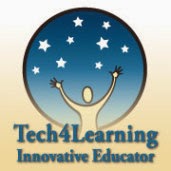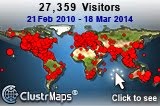
As one who studies learning, I have become fascinated by a type of learning activity I've observed on Instagram. I segment my interests using different social media platforms for different parts of my personality and have been using Instagram (where I go by the name @effort_ease) as a place to follow others who share my interest in yoga (whereas Twitter where I am @edtechworkshop is all about teaching and learning). I do this only because I am like a kid in a candy store when it comes to social media, finding so many interesting people to connect with and learn from that I can't fathom having it all in one place.
When I first began filling my Instagram feed with amazing yogis, I became aware of an assortment of yoga challenges taking place. This is the general protocol for an Instagram challenge:
- Outreach- There are at least two, often many more, host accounts for each challenge. These are prominent accounts with many followers who generate excitement and interest for participating in the challenge since you get to interact on some level with these motivators.
- Activity- There is a daily challenge to be fulfilled via an uploaded photo tagged with the challenge hashtag
- Reflection- Reflection appears, in most challenges, to be optional yet widely practiced. I find this especially interesting. The nature of participating in a challenge seems to bring out a desire to share more than just the photo. Typically, posters will share thoughts about what fulfilling the day's challenge entailed or brought to the surface, what was experienced or learned, future goals and thoughts about the nature of learning and growth related to the activity.
- Reward- many challenges are sponsored by a business account who uses the challenge to build their own brand awareness. For example, a business that makes yoga clothes may sponsor a yoga challenge by offering a piece of their clothing as an incentive. All who meet the requirements of posting are eligible to win the prize at the end of the challenge.
I've now discovered that there are many self-selected groups of Instagrammers in a wide variety of interest groups that use challenges and community support, as well as the power of visual documentation, to support their growth and goals.
- What are the lessons here for those who wish to inspire learning in more traditional settings?
- How can teachers and schools leverage the power of these types of learning communities?
I've identified six benefits of social media challenges that motivate learners and help them succeed.
According to a 2015 article, Kayla and the 3 Million-Strong Bikini Body Movement,
The hashtag #BBG has been used over a million times on Instagram, at a rate of one post every thirty seconds. Other hashtags like #KaylasArmy, #thekaylamovement, #thek2movement, #deathbykayla, and #kaylaitsines are also rampant.The "BBG girls" support one another by posting inspirational quotes, sharing recipes and giving "likes" and encouraging comments to hashtagged photos.
Challenge: Challenge is something that occurs naturally on a true learning path. No learner wants to stay in one place. The problem with typical classroom learning is that it can be difficult for a teacher to constantly gauge the level of challenge appropriate for each learner. Some learners are not sufficiently empowered or do not possess the confidence or stamina necessary to push themselves in an academic environment. Seeing photos of the achievements of others acts as inspiration to challenge oneself. The supportive (non-graded, non-judgmental) environment for achieving the goal is, I believe, more conducive to taking risks. Finally, each person posts one photo or video "artifact" showing their interpretation of the day's challenge. The underlying process, including failed attempts and difficult practice sessions, are not necessarily showcased. But they are, undoubtedly, the backstory to every successful picture that gets posted.
 |
| @sofiayoga |
Document Growth: Another compelling and inspiring piece is the power of photos and videos to make learning visible. BBG and other fitness groups use hashtags like #transformationtuesday to document their progress with side-by-side, before and after selfies. It is amazing to see the growth that occurs with persistent effort and the passage of time.
 |
| @elle_fit |
What would learning look like if schools leveraged the benefits of learning communities as successfully as social media? I know there are many schools, teachers and classrooms playing with these ideas. Fundamentally, we will have to shift our whole mindset around learning if we are to create schools with true cultures of learning. Learning is a journey. I believe the Instagram challenges (and similar memes, challenges, etc. happening through social media) make learning fun and, most importantly, give learners permission to be wherever they are on that journey and provide support, challenge and more.
















